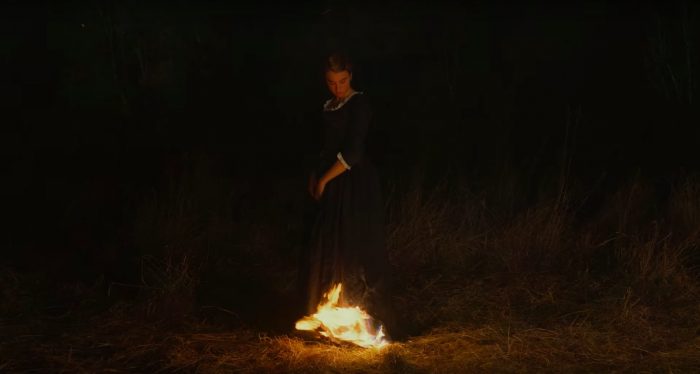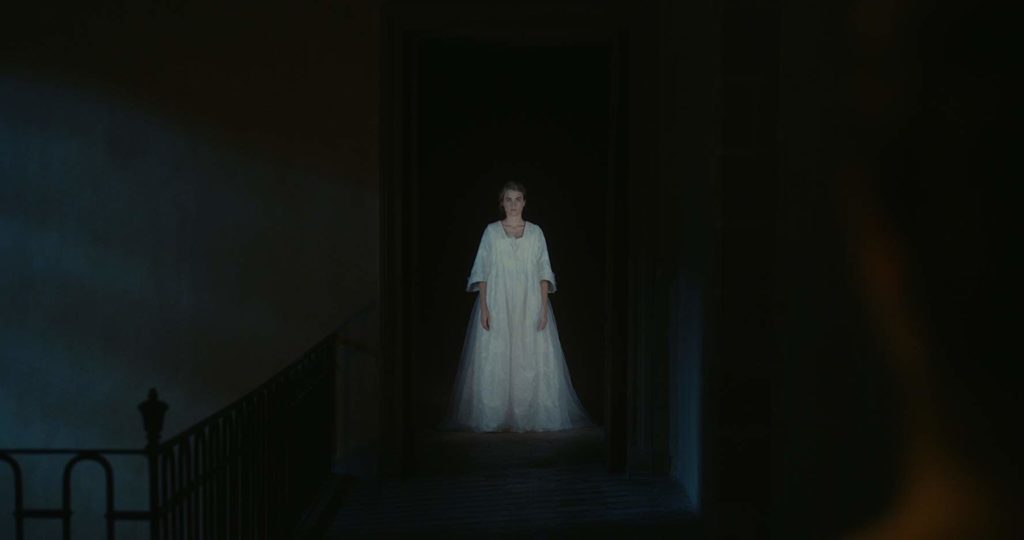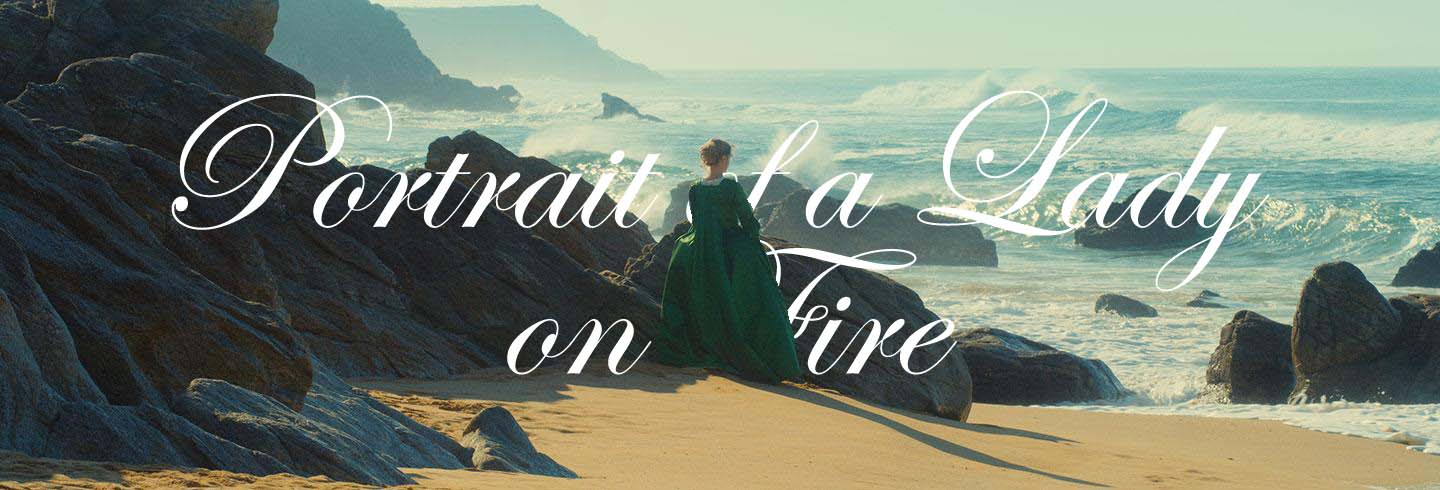I’m inadequately equipped to answer many of the questions and potential answers in regard to the question, “What the heck was Portrait of a Lady on Fire about?” – and yet, there are many universally accessible explanations here that are available to all viewers, and all art connoisseurs. Personally, I had an ultra-surprising response to this film in that it dredged up piles of my own regret, and historical experiences, which caused me to dig a lot deeper into the intentions and hopes this cinematic experience were hoping for. What was it going for? What was it hoping to do to the audience that crosses its path? Why does it exist, and what is its raison d’etre? I also wondered if this was a modern sentiment that was being projected onto a historical reference, or was it accurate. I wanted to know about the myths, the lore referenced, and really everything there was to know about this movie possible. Portrait of a Lady on Fire Dissected and Inspected.
Walkthrough of Portrait of a Lady on Fire
The movie starts back, somewhere around the end of the eighteenth century? I’m not hundred percent certain here, but it feels like we are the cusp of the 1800’s. We are at a painting class being taught by Marianne (played by Noémie Merlant) when one of her students asks about her painting – and she tells them that it’s entitled, Portrait de la jeune fille en feu. And this will be the framing device through which the rest of the movie is structured, and that is supported by the ending, which just tells us that most of the movie is a pile of memories. But we’ll get to that. Framing device… jumping back and forth. It’s Okay. Breath into a bag if you need to, geeze. I’ll put it to you simply… the entire movie, Marianne is remembering back to the ultimate moment, ultimate memory of her life. That work?
We’re going backwards now. Is that Okay? You aren’t going to lose it are you? K, great. So years previously, Marianne was summoned to an island in Brittany to paint a portrait for a woman named Héloïse. The problem is that the woman doesn’t want to have her portrait painted because it is proof that she is beautiful, and it’s a condition of her being married off. (There is a side story-line about Héloïse’s sister having just committed suicide, and Héloïse’s return from a convent, but let’s just stick to the bare essentials.) The trick here is to see if Marianne can get Héloïse’s likeness without making her aware of the enterprise. So they spend time walking and reading, just generally hanging out. All the while Marianne is constantly memorizing Héloïse’s features.
When Marianne completes the portrait she realizes that this is actually a complete betrayal of her new friend. Worse, when Héloïse makes fun of her painting, for not portraying her true self, Marianne thrashes it. Héloïse’s mother allows Marianne another shot at making the painting while she is gone to Italy over the next few days. Importantly, one day, Marianne and Héloïse read the story Orpheus and Eurydice together. And the two debate the story and its ending.

The Story of Orpheus and Eurydice Break
The legend of Orpheus and Eurydice tells of the love between Apollo’s son, Orpheus, and Eurydice. Their marriage is ruined from the start because Hymen, the god of marriage, doesn’t bless it. Don’t you HATE it when that happens? Worse, Eurydice dies while running from some dude who wouldn’t take no for an answer. Orpheus is utterly shattered. So he decides he’s going to travel to the Underworld in order to bring his Eurydice back from the dead. Hades obliges Orpheus and makes him a deal: if he can walk all the way back, out of the Underworld, to the land of the living, without ever looking back at Eurydice, she will be allowed to return. BUT! Orpheus fails! He can’t do it, he turns back for one last glance. POOF! (Curious about the end of the story…? Well, a few Thracian maidens, for some reason or other – that I literally do not understand, tear Orpheus to pieces. And when he dies, he’s sent to the Underworld. WOOT! Which, causes the star-crossed lovers to be reunited forever.
Now, our two main characters in this fictional story are debating the inner workings of this myth. I mean, it’s a good question. Orpheus travels to the underworld to save his wife to be. And instead of remaining steadfast, not looking back at his beautiful love, he turns around. But why? Since watching this film a week or two ago, I have read a couple of different pieces talking specifically about the myth of Orpheus and Eurydice and its implications. The thing that keeps coming back to me is that the implications involved in looking, gazing, seeing, are all dangerous. A gaze could ruin you. And yet, that sort of ruining might be worth doing, especially where love is involved. But I’ve digressed again… let’s finish out the story.
The duo spend a few more days together. And then are ultimately forced apart for good by circumstances. The two ultimately only spend about two weeks together and during that time they transform their relationship dramatically over that time. The last two moments we are given after their separation are fascinating. The first is during an art show, where Marianne has exhibited a piece of Orpheus and Eurydice under her father’s name so that it will be shown. The painting depicts the instant just as Orpheus has turned to look at his love. And it shows Eurydice as she is reaching out for him as she’s being dragged back down to the underworld. While at the gallery, Marianne finds a portrait of Héloïse where she is holding her child, and holding a book opened to page 28. 28 being the page where Marianne had drawn a sketch of herself for Héloïse.
Finally, the second encounter that Marianne has with Héloïse was at a concert. The concert was a performance of Vivaldi’s Four Seasons. Now, if you remember back, Marianne had played Héloïse the Presto from Summer on her harpsichord. And the movie ends as Marianne watches Héloïse react to the emotion of the piece in solitude.

Thoughts on Portrait of a Lady on Fire
When Céline Sciamma, the writer and director of the film, was asked by Vox about the movie, and the explanation for the film she had a fairly insightful response.
“I see [the movie] as a manifesto about the female gaze. I see this as such a strong opportunity to make new stuff, new images, new narratives. They are such powerful images, and they are so not seen. And you are in charge. You have a strong responsibility. But also, there are so many opportunities to be playful. To embody ideas that matter a lot to myself, but also to a lot of people. I see it as a really great dynamic for creating and also very fun visually.”
I also appreciated the fact that Sciamma made the film specifically about female artists during a period when they would be in abundance. I mean, the fact that there was a movement during this time, and that that was historically accurate was really impressive. Sciamma made a deliberate choice to select this historical period mainly because of this female artistic movement. It is really insightful that cyclically, women artists have been allowed more freedom than they even have now. Yes, it is true, during this period, historical paintings were generally left for the men to create. But in researching the validity of the movie’s assertions, it really did seem like women were seeing many more opportunities in this art era. (Want more information, here’s a couple of interesting reads on this topic.) Most surprisingly, to me anyway, was that there was an enormous female body of critics that really encouraged their fellow artists on.
The film is obviously a love story – but it is also a film about the work of creating. Look at Marianne’s torment she pours into the work of creating the portrait for Héloïse. I read somewhere else that the artist who created the different works for this movie worked 18 hours a day for weeks. Oh, it was only 16 hours a day. Cough. Here, you can read along with me here. (Or just read my TL;DR.) Basically, Céline Sciamma reached out to Hélène Delmaire and even thought she’d never heard of Sciamma before, she agreed to join the party. Normally, when a movie focuses on the creation of a piece of art, or pieces, they dance around the painting. The actor paints with a brush with no paint on it. They obscure the actual work. It drives me crazy. But here, woah, look at the way Delmaire is holding her brushes (it was Delmaire who was actually painting in the movie) and applying the paint. Finally! A Movie that is committing to the art! So I went looking for examples of her work and fell in love:


There really isn’t a confusing rubik’s cube locking away the internal message of Portrait of a Lady on Fire. It’s about two women who have fallen in love. But it is also about what it means to see someone. To see them fully and to comprehend them, at least at some level. Think about the two moments in the entire film where music is utilized. The first instance was when Héloïse’s dress catches on fire. Héloïse was so intent on Marianne, so overwhelmed by what she was witnessing around her, she didn’t notice that her dress had caught fire. (I mean, if this isn’t the most literal metaphor ever, I don’t know what is.) And the second is at the ending. Marianne intently stares at Héloïse as she is experiencing the wonder and the rapture of Vivaldi’s Four Seasons. Which, literally, brought tears to my eyes.
I’m going to stop here for a second, and make a comment. If you are not one to appreciate the arts, it is never, ever, too late. Maybe it isn’t paintings, or music that winds your clock. OK. But what about poetry? Sculptures? Something. Dive in. Grapple with the work. Try and understand what it is that the artist might be saying. And then, try it yourself. Even if you fail miserably, you could get better if you work at it. Or, maybe it will just give you a better appreciation for what particular artists are capable of. OK, I’m stepping down off my soapbox now. The brilliance of art is that there is nothing new under the sun. Nothing. And if you feel something, but can’t express it, you might be surprised to find artists that have already grappled with similar sentiments. Then find the artist, if they are alive today, and talk to them about their work!! You’d be surprised to find how many would be honored to hear your questions and thoughts.
Final Thoughts on the Film The Portrait of a Lady on Fire
The cinematic vision that is The Portrait of a Lady on Fire is really well done in every way. Take, for example, the way in which class separation dissolved into nothing after Héloïse’s mother left. The maid, the portrait artist, and the lady of the house turned their various roles and responsibilities inside out. Here we have the maid posing for a portrait while the lady of the house is making dinner, and the artist is painting. There we have the painter reading to the other two. It seems like this is a life envisioned upside down. Thoroughly imagined, and intricately detailed.
And when we learn that Héloïse is bound to be married off, we are left with the idea of art, the beauty of music, and the concept of the gaze to carry us forward from here. Obviously they remember their time together (as indicated by page 28 of the book), but the things they learned seemed to be even more important than these two weeks. Steal your gaze, remember the love, and build home where you can find it.
Edited by: CY

